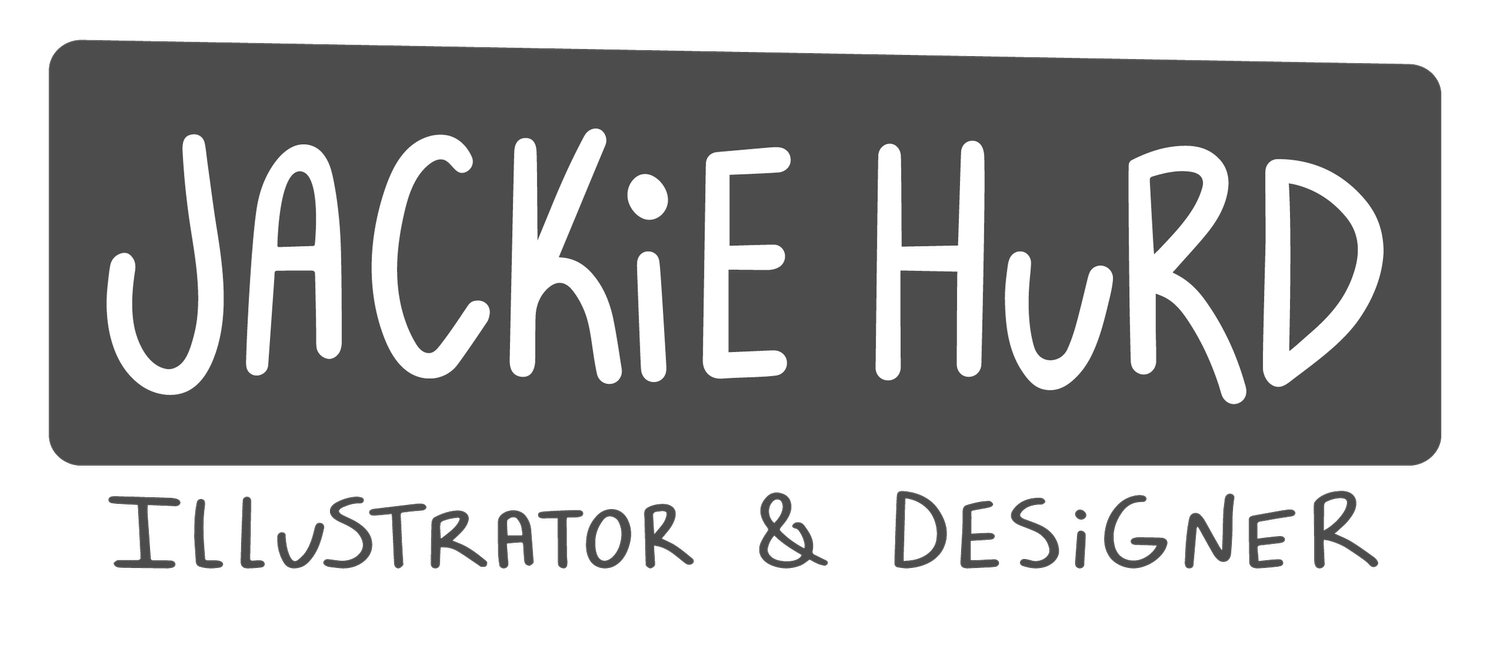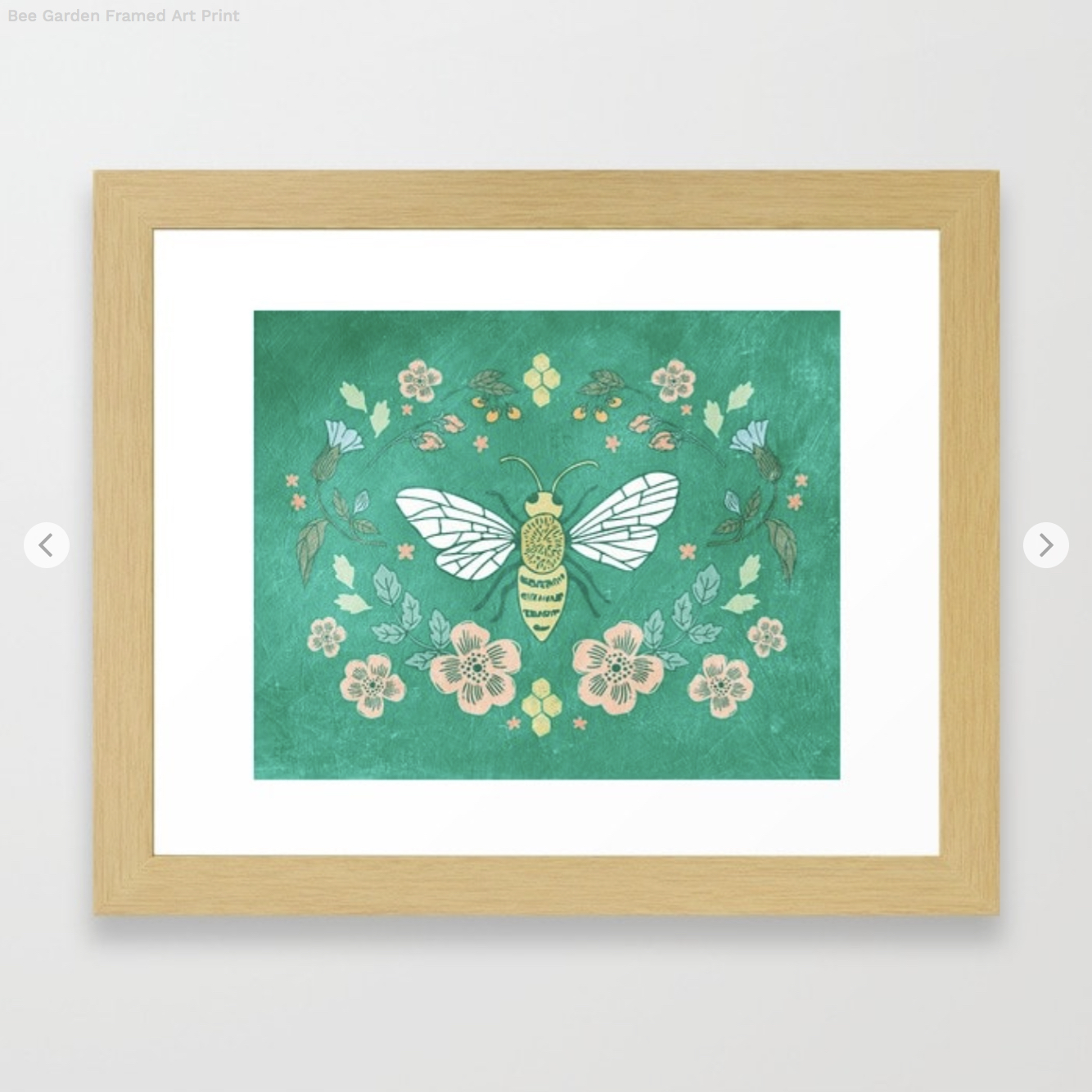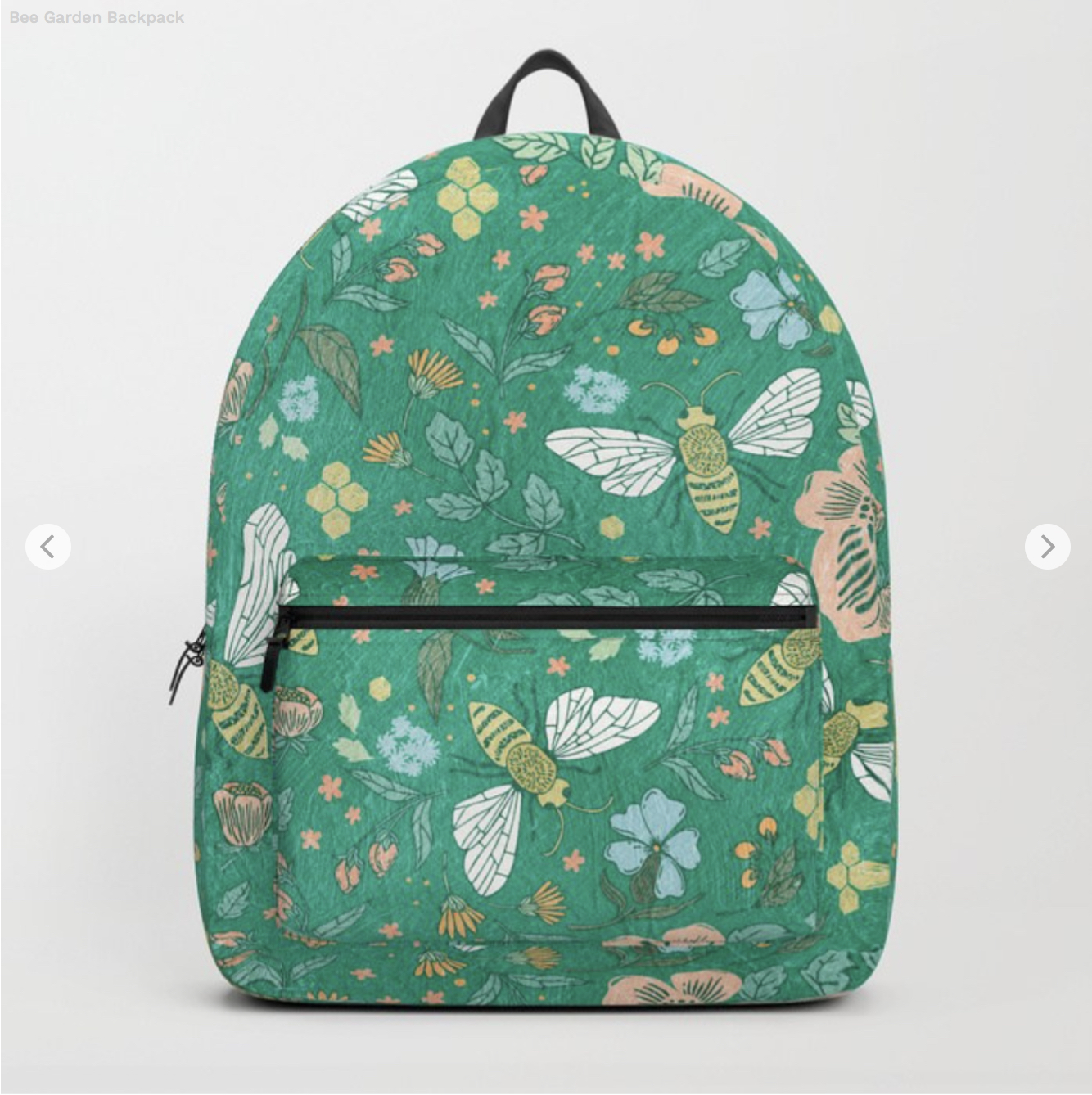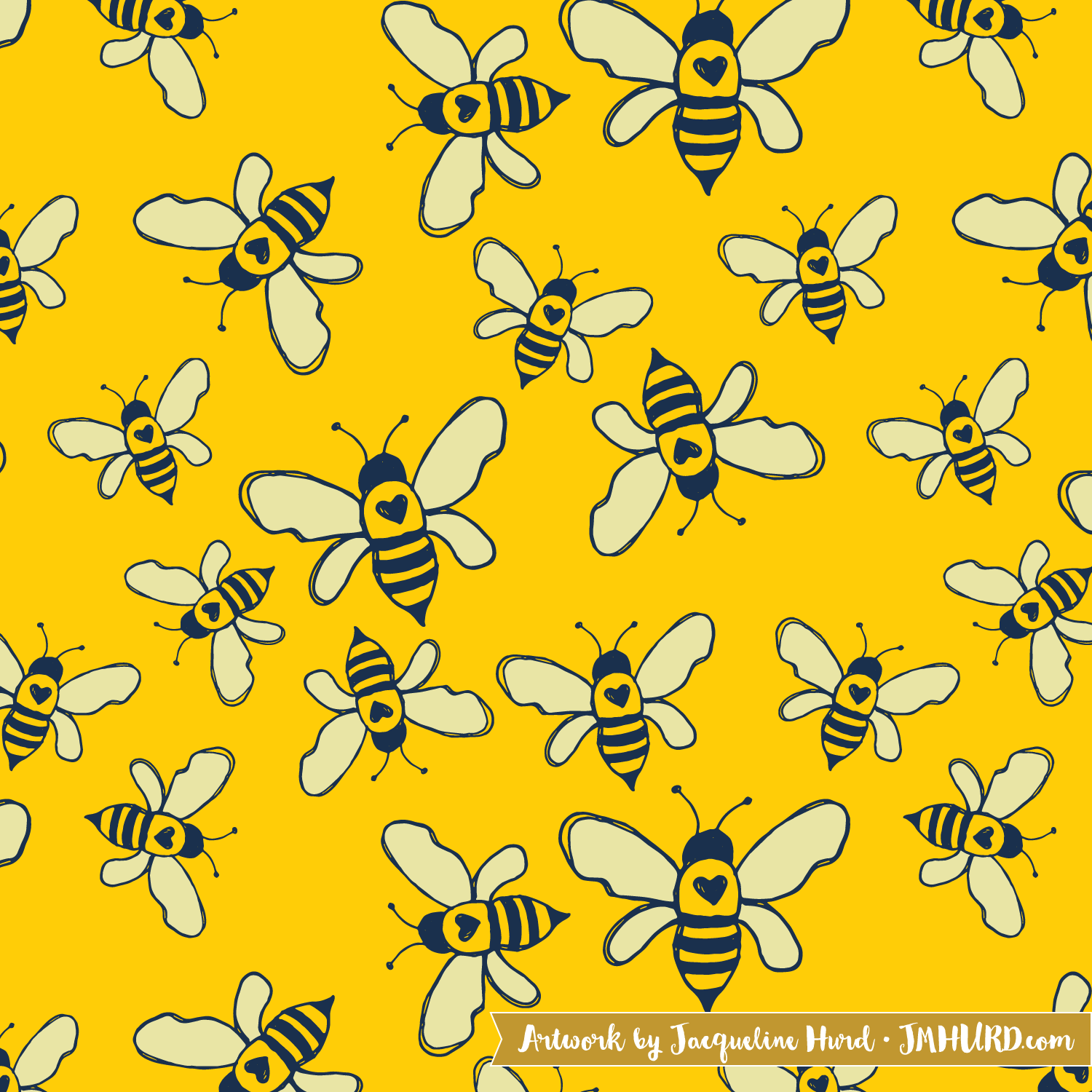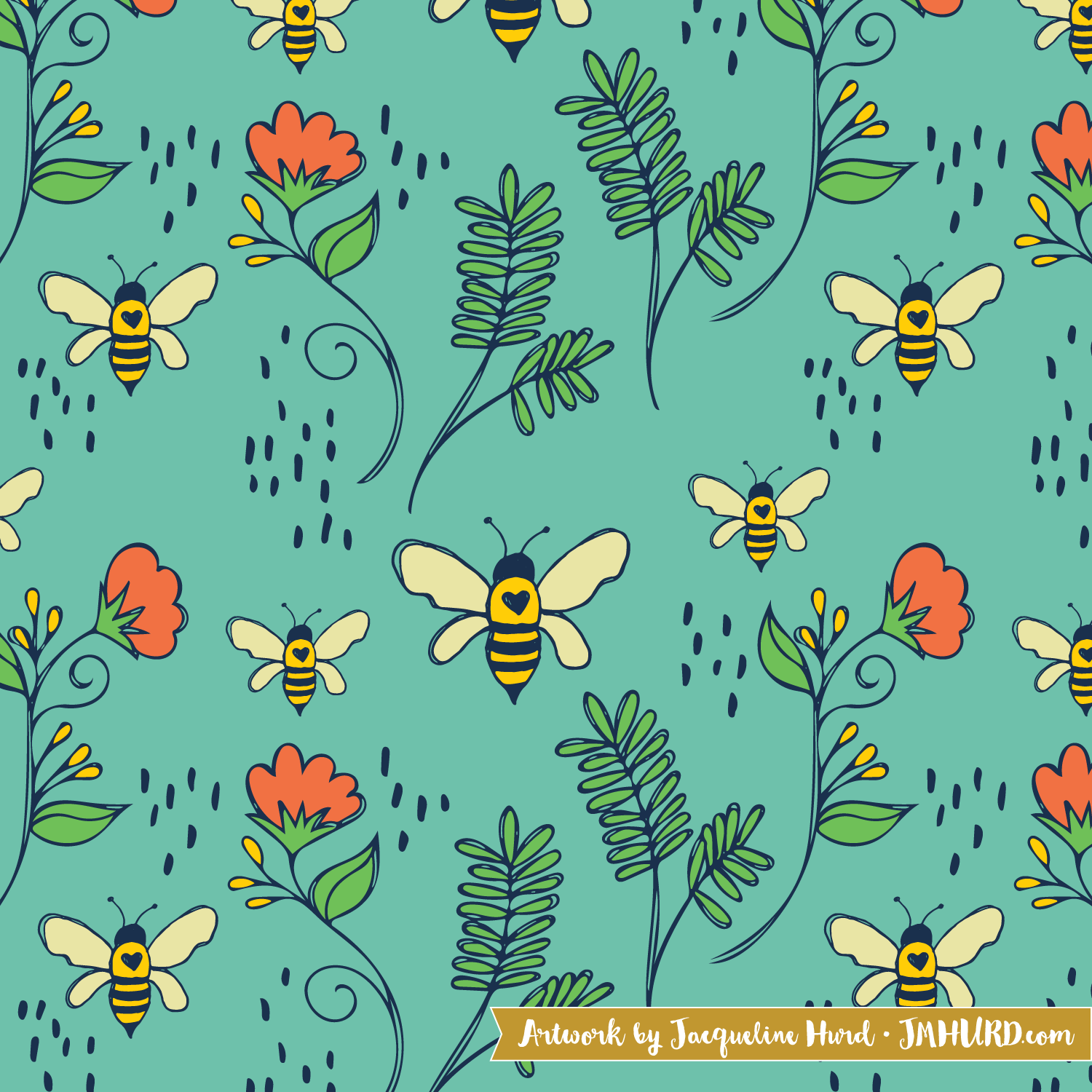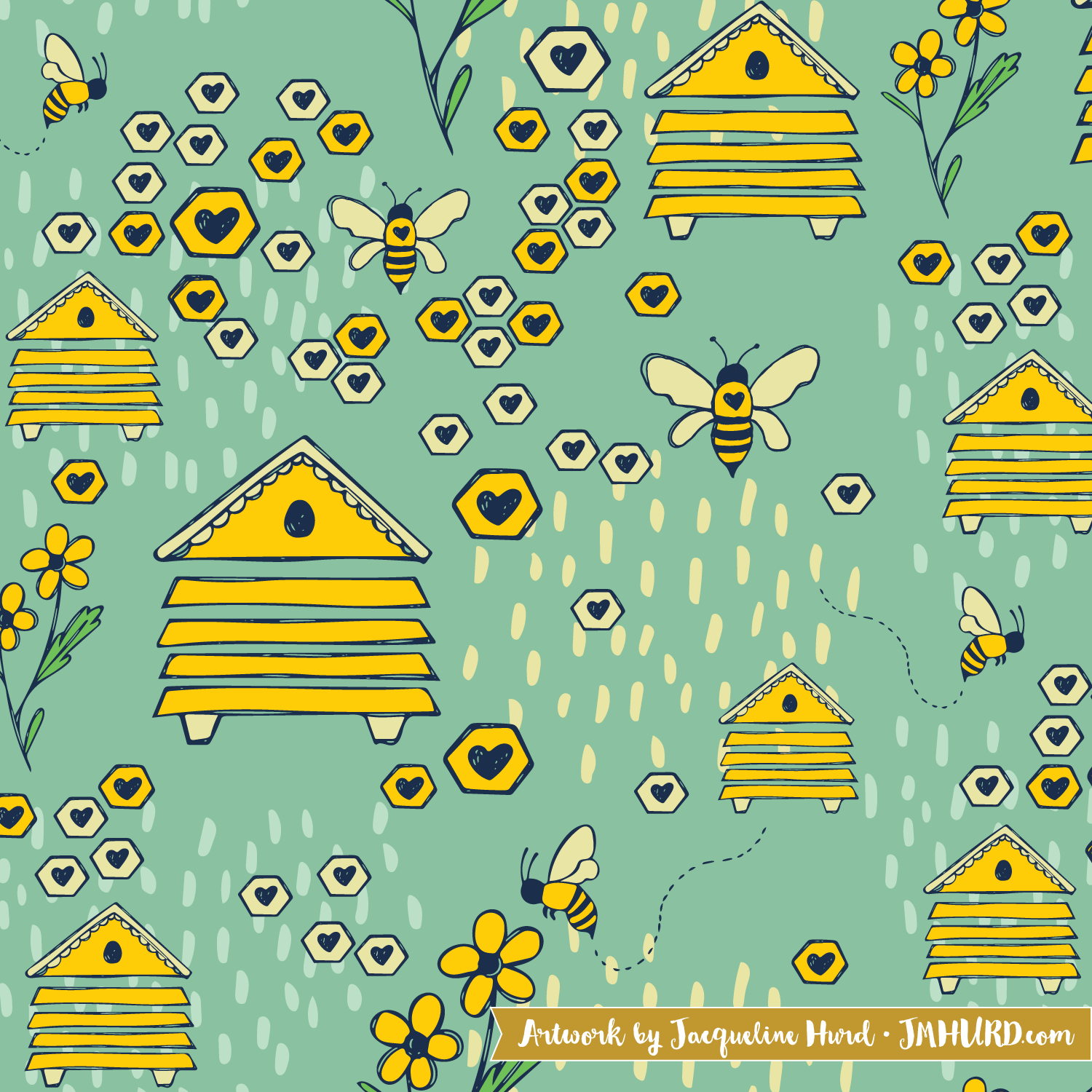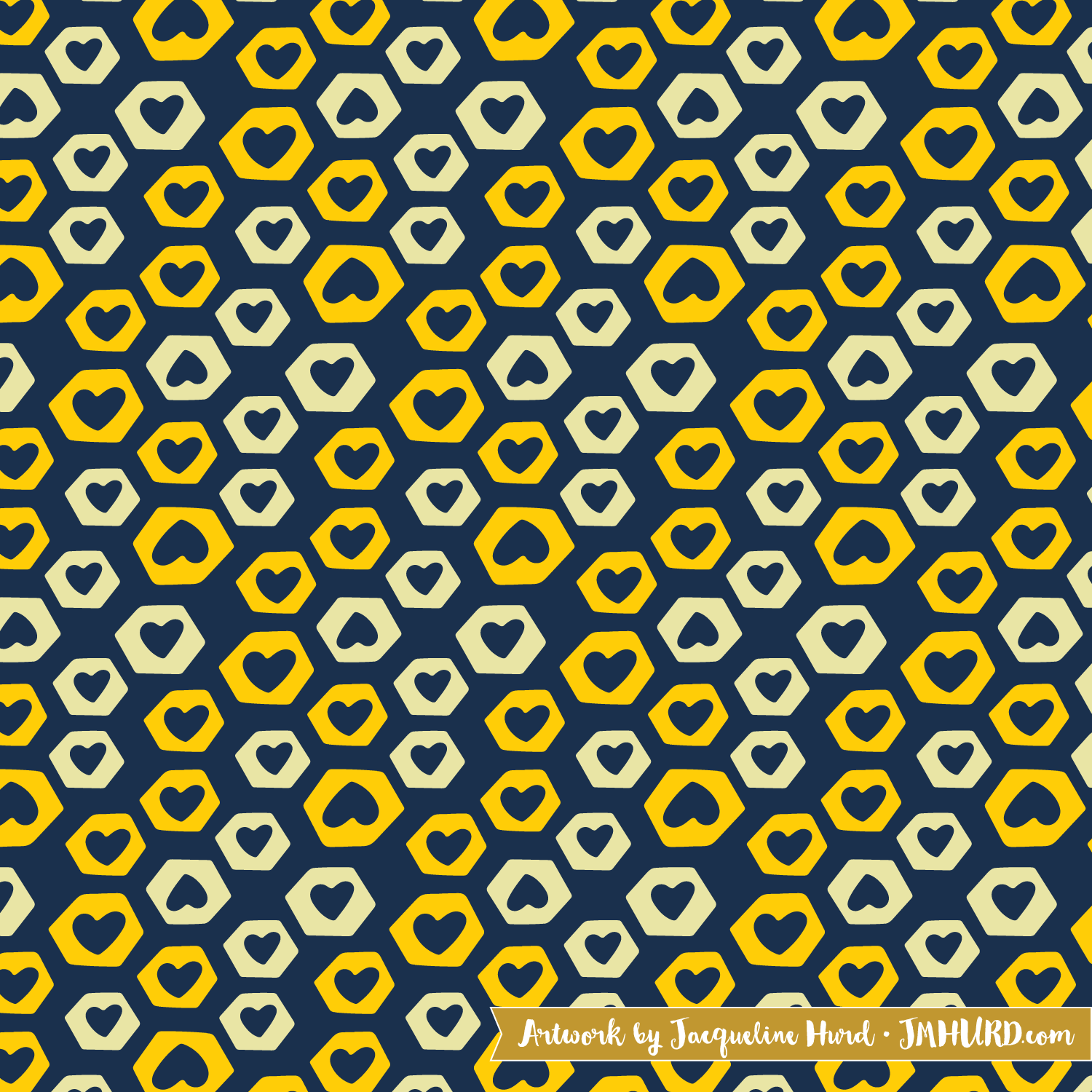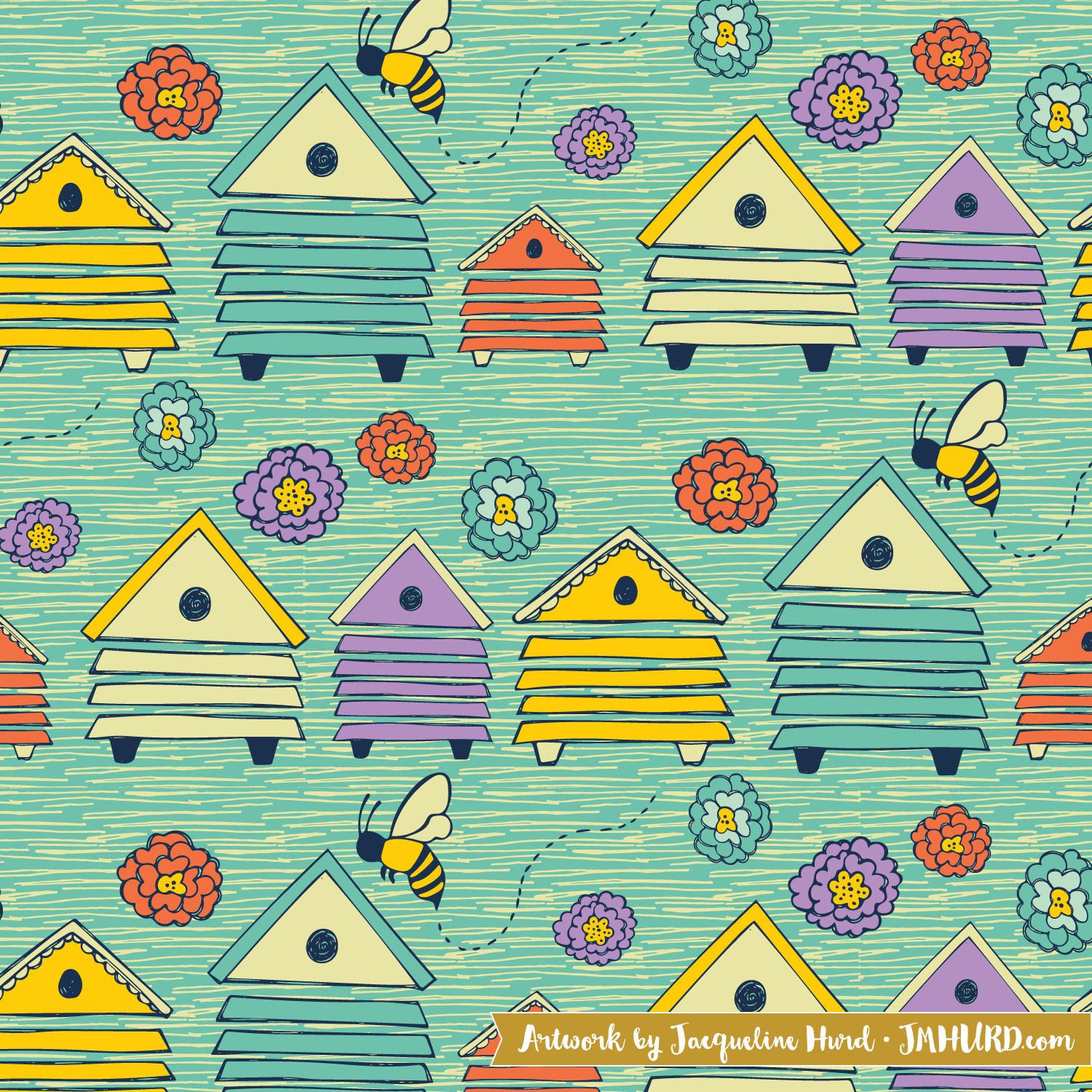Bee Garden
Bees seem to have become a reoccurring theme in the artwork I produce and for a good reason, we need them to pollinate the gardens where our food grows. The more I learn about these fuzzy yellow insects, the more fascinated I become with them. And equal to my fascination is my concern for their well being.
Bees seem to have become a reoccurring theme in the artwork I produce and for a good reason, we need them to pollinate the gardens where our food grows. The more I learn about these fuzzy yellow insects, the more fascinated I become with them. And equal to my fascination is my concern for their well being.
As an artist, the easiest way for me to raise honey bee awareness is to draw or paint them and make my artwork available on products. When someone wears or displays my bee art I hope it will spark a conversation about how important these little creatures are and how much danger they are currently in.
There are a few very simple things anyone can do to help bees. If you have a yard, fill it with bee friendly plants. Bees love wildflowers such as cosmos or echinaceas (also known as cone flowers). If you prefer leafy foliage with fewer flowers you can plant hostas, just watch out for the deer and bunnies, they also enjoy hostas!
Another way to help bees is to pay close attention to the use chemicals commonly used in gardens. It may seem harmless to spray your rose bush with that bottle of beetle banishing spray you picked up from the garden store, but a quick glimpse at the long list of ingredients will almost immediately tell you otherwise. We can't immediately change the practices of big agriculture, but we can at least start with our own gardens. Chemicals used in most pesticides, herbicides and fungicides can transfer to the nectar that the bees drink and as a result poison them. Neem Oil is an all natural alternative that won't harm bees. You can also use it to make your own bug spray! Planting a barrier of fragrant plants such as rosemary and lavender will also help with pest control.
If you're interested in learning more from someone who knows way more than me, I recommend picking up a copy of The Bee Friendly Garden by Gretchen LeBuhn, available on Amazon.com. A good website to checkout is The Honey Bee Conservatory, a website that not only educates but also enables you to sponsor a hive or receive a sponsored hive. Pretty neat.
To support my artwork and to provoke honey bee conversations, this piece is available for purchase on different products in my Society6 shop. It's also available in different arrangements and standalone as a bee sticker among other things in my RedBubble shop.
If you've got a bee project of your own, I'd love to hear about it! Leave a note in the comments.
100 Days of Pollinators
Every year on April 3rd the 100 Day Project begins. The 100 Day Project is an international art project that anyone can participate in. It's truly an amazing adventure for all involved either by making art or following along. I've found that the 100 day project is an opportunity to grow as an artist and establish a solid routine.
Every year on April 3rd the 100 Day Project begins. The 100 Day Project is an international art project that anyone can participate in. It's truly an amazing adventure for all involved either by making art or following along. I've found that the 100 day project is an opportunity to grow as an artist and establish a solid routine.
I had no idea when I challenged myself to 100 days of pattern making a few years ago that it would be the beginning of what I can now call a career. Now I make patterns on almost a daily basis. 100 days of pattern led to hundreds of days of patterns and I couldn't be happier.
So fast forward to now and I've decided to jump on board with this year's challenge. I'm doing it a little differently this year. I've teamed up with Jill O'Connor who is the other half of Jack and Jillo. I'm one half, she's the other half. We make a great team. Anyway, we'll be working through this challenge together with each of us committing to create 50 pieces of art which will be displayed in our shared Instagram feed, @jack_and_jillo. We chose a theme that will help bring awareness to something we are both passionate about: Pollinators and their favorite flowers. Without pollinating insects our food can't grow and currently one of our most important pollinators, the honey bees, are having a rough time.
Throughout the duration of this challenge I hope to learn more about bees, the flowers they love and what we can do to help bees survive and thrive. I look forward to sharing what I learn with the world through the art that Jill and I create and my hope is that through our art we can make an impact.
Join the fun by following us on Instagram, you are also welcome to join in. We'll be using the hashtag #100daysofpollinatorsandflowers
Bees and Flowers, the story behind this design
Thanks to Pinterest somehow deciding I was into honey bees, lots of bee related posts started popping up in my Pinterest feed...
From a young age most of us are taught to be afraid of honey bees and for a good reason, they sting and those stings hurt. Not only do the stings hurt but for a few unlucky people those stings can cause a severe allergic reaction. But sting aside, if you take closer look at the honey bee you'll see that the role they play in our ecosystem makes them a pretty valuable insect.
Thanks to Pinterest somehow deciding I was into honey bees, lots of bee related posts started popping up in my Pinterest feed. When viewed on my phone screen I could safely see that these little 6 legged honey making critters were actually beautiful up close and when I'd click on the pictures, the articles I'd be led to were full of information, I was stunned to learn that honey bees are in serious danger due to mass usage of pesticides by commercial agriculture. Big deal right? Actually, it is a big deal, without bees, flowers don't get pollinated and plants don't reproduce. If plants can't reproduce, how will vegetables grow? How will animals get fed? Where will our food come from? And what about honey? What would tea be without honey? So you see, from what I've learned, the world needs bees. Before I knew it I found that my fear of bees had evolved into concern as well as a deep appreciation for what they do. I also found creative inspiration as I learned more about honey bees which led to lots of bee doodles and from those doodles I created a series of patterns called "Let them Bee" in hopes that at least through my art I could raise some awareness about the goodness of bees.
To my surprise, there are a lot of other people who like bees too! My two most popular designs on Redbubble happen to be from my Let them Bee Collection. Honey Makers and Bees and Flowers.
While I'm not quite ready for my own beehive, it's something I'm considering as a someday thing... lots to learn first! I do know one thing for sure, you won't catch me swatting a honey bee.
I'm no expert on honey bees so if anyone reading this has anything to add or a website with valuable information, feel free to leave a note in the comments section.
